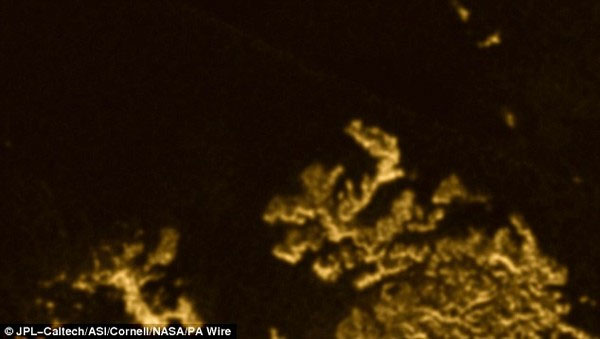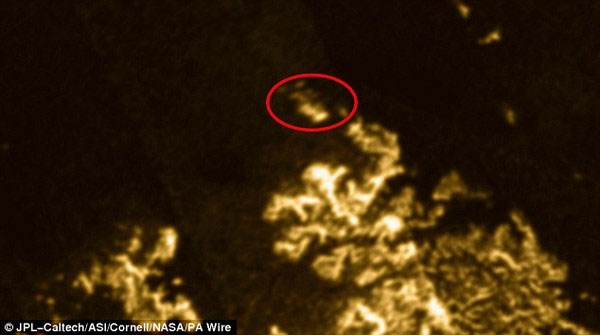Detecting 'magic island' on Saturn
Scientists are looking for the cause of the mysterious appearance of "magic island" on Saturn.
>>>Titan Saturn: 1,000 years of rain
The mark of the "magic island" has recently mysteriously appeared in radar pictures recorded in the large lake area on Titan - Saturn's giant moon. Scientists have argued quite harshly about this mystery and said that it is most likely the result of waves, bubbles or floating solids.
This mysterious object was discovered after experts compared the new picture and image recorded by the Cassini spacecraft to explore the Ligeia Mare lake system - Titan's second largest lake area in 2004.

Image of Ligeia Mare lake area in 2004
Experts said that before July 2013, the area was quite flat and there was absolutely no phenomenon at all, including waves. Later, the mysterious object, dubbed the "magic island" suddenly appeared.
Cosmic scientist Jason Hofgartner of Cornell University said: "This finding tells us that the liquid lake area of Titan's northern hemisphere is not only standing and moving. I don't know exactly what made the "magic island" appear but we really want to learn about it. "

The image of the "magic island" appearance in the recently recorded picture
Titan is the second largest satellite in the Solar System, composed primarily of water and ice materials. Titan's atmosphere is primarily nitrogen. Titan's climate consists of methane and ethane clouds.
With liquid (both above and below ground) and a thick layer of nitrogen atmosphere, Titan is thought to be a primitive Earth but has a lower temperature. Researchers have suggested that it is possible that marine fluids beneath Titan act as a biological environment.

Image of a large area of Ligeia Mare Lake on Saturn
Astronomers believe that the mysterious appearance of "magic island" is due to seasonal changes on Titan . Some hypotheses were made that some people thought that the wind formed the wave and created the "mystery" that appeared in the radar image; bubbles formed by gases pushing up from the sea floor or causing a solid object to float on the water .
Mr. Hofgartner said: "It is possible that wind, rain, high tide . affects methane and ethane on the lake area in Titan. Through this discovery, we can learn to better understand the similarities. each other, the difference in geological processes formed in Titan and Earth ".
The findings are published in Nature Geoscience.
- Overview of Saturn
- Unseen images of Saturn's belt
- Why do we like to watch magic?
- What's interesting on Saturn?
- Detecting water on Saturn moon
- Detecting oxygen on Saturn satellite
- Detecting water on a Saturn satellite
- Detecting signs of life on Saturn satellite
- Saturn changes color seasonally
- Video: The rain of diamonds on Saturn is amazing
- Detecting sea water on Moon Enceladus of Saturn
- The terrible consequences of magic tricks are prevalent throughout netizens
 Van Allen's belt and evidence that the Apollo 11 mission to the Moon was myth
Van Allen's belt and evidence that the Apollo 11 mission to the Moon was myth The levels of civilization in the universe (Kardashev scale)
The levels of civilization in the universe (Kardashev scale) Today Mars, the sun and the Earth are aligned
Today Mars, the sun and the Earth are aligned The Amazon owner announced a secret plan to build a space base for thousands of people
The Amazon owner announced a secret plan to build a space base for thousands of people